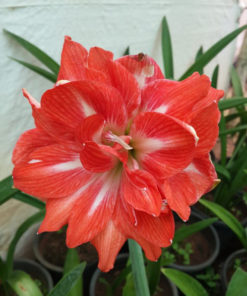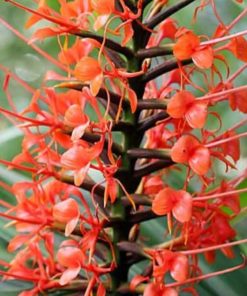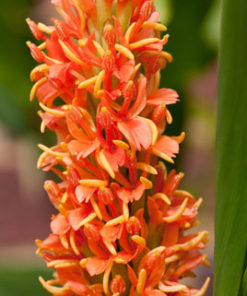Cyrtanthus Bulb orange Ifafa LIly color pack of 5 bulb
₹125.00
Out of stock
Email when stock available
Cyrtanthus Bulb is a large genus of the Amaryllidaceae family native to South Africa. Species are found growing in a wide range of habitats including damp bushy stream-edges, as epiphytes on other plants, and in near desert conditions. Unfortunately they are rarely seen in cultivation, and are perhaps not sufficiently known, ever to become popular. A few species adapt well to general cultivation, but for others they require a rather different treatment as to resting periods and watering depending on their areas of origin. Their requirements are sometimes so exact, that they will only ever be grown by collectors and specialist growers. My personal opinion is (don’t take that as gospel truth) that Cyrtanthus like a steady, long, moderate to warmish growing season, without sudden shocks of very cold periods, which could also spell disaster. Growing Cyrtanthus species was never meant to be easy, (apart from Cyrtanthus elatus and hybrids) but if successful, will be fascinating, rewarding and very enjoyable. Bill Dijk
Cyrtanthus Bulb The requirements of the more difficult species will have to be understood to be successful. That’s why I always grow them in (generous) containers (various sizes according to species), not only for convenience, but mainly to control conditions required at the different times of the season. When it comes to watering, when and how much is important as well. I usually water freely when in active growth and flowering, but soon after flowering and seed collecting, growth slows down and so does watering to the point where I keep them barely damp. Too much water combined with too much cold at this time, again could be detrimental for the plant. BTW: It is a well known fact that many pot plants are lost due to over-watering.
With the potting medium, the main requirements should be good drainage at all times. Our mix consist of 50% composted bark, 25% pumice and 25% sand, to which I add some well decayed mushroom compost, plus a measure of (9-12 months) slow release, well balanced NPK ( + trace elements), low nitrogen fertiliser. Don’t think with this (ours) medium your results will be magically solved. I think the climate, the method of cultivation and potting mix together will determine success. It’s best to treat each species separate.
Cyrtanthus species seem especially prone to Narcissus bulb fly, at least when grown in California. The larva can attack the bigger bulbs and you may not notice anything wrong until the leaves die back and exploration shows the bulb is soft and being eaten from the inside. Some growers regularly treat their pots with insecticide if they cannot protect the plants
Be the first to review “Cyrtanthus Bulb orange Ifafa LIly color pack of 5 bulb” Cancel reply
You must be logged in to post a review.



















Reviews
There are no reviews yet.